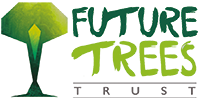 The starting point of any breeding programme is the identification and selection of the very best individuals that will form the basis of your breeding stock. These are termed ‘Plus Trees’ and selection is based on phenotype (what the tree looks like). Plus trees should exhibit clear dominance within the stand, be disease free and have good form. The length of bole until the first fork should also be considered, and also the thickness and angle of the branches, fine horizontal branching being preferable to heavy more vertical branching as this reduce knot size.
The starting point of any breeding programme is the identification and selection of the very best individuals that will form the basis of your breeding stock. These are termed ‘Plus Trees’ and selection is based on phenotype (what the tree looks like). Plus trees should exhibit clear dominance within the stand, be disease free and have good form. The length of bole until the first fork should also be considered, and also the thickness and angle of the branches, fine horizontal branching being preferable to heavy more vertical branching as this reduce knot size.
At present, Great Britain is divided into four Regions of Provenance and 23 Seed Zones (click on Figure 1 to enlarge) while the Republic of Ireland is classified as one region and Northern Ireland as another region of provenance (see Figure 2). Native tree planting schemes encourage the use of local seed and currently the England Woodland Grant Scheme rewards the use of such. However, in the light of climate change and climate envelope models, thinking is starting to shift slowly, and the use of a more mixed (and hence robust) approach is being adopted.
The ash group currently has 370 Plus Trees selected across all regions. Usually, only one or two trees are selected per population (stand) to ensure we maintain a broad genetic base for our breeding work. However, as ash is dioecious, we sometimes select three or four to increase the likelihood of selecting female (seed bearing) trees.
Region of
|
Number of Plus Trees Selected |
In Breeding Seedling orchards |
In Clonal Seed Orchards |
In Clonal Hedges |
|---|---|---|---|---|
| 10 (east Scotland) | 34 | – | – | 8 |
| 20 (West Scotland | 46 | 4 | – | 11 |
| 30 (Wales, south west England and the Lake District) | 75 | 4 | 40 | 57 |
| 40 (lowland England) | 214 | 28 | 72 | 164 |
| Republic of Ireland | 14 | – | – | – |
| Northern Ireland | – | – | – | – |
Once plus trees are selected, they enter the breeding programme either as seed (through Breeding Seedling Orchards – BSOs) or clonally through grafted seed orchards.
